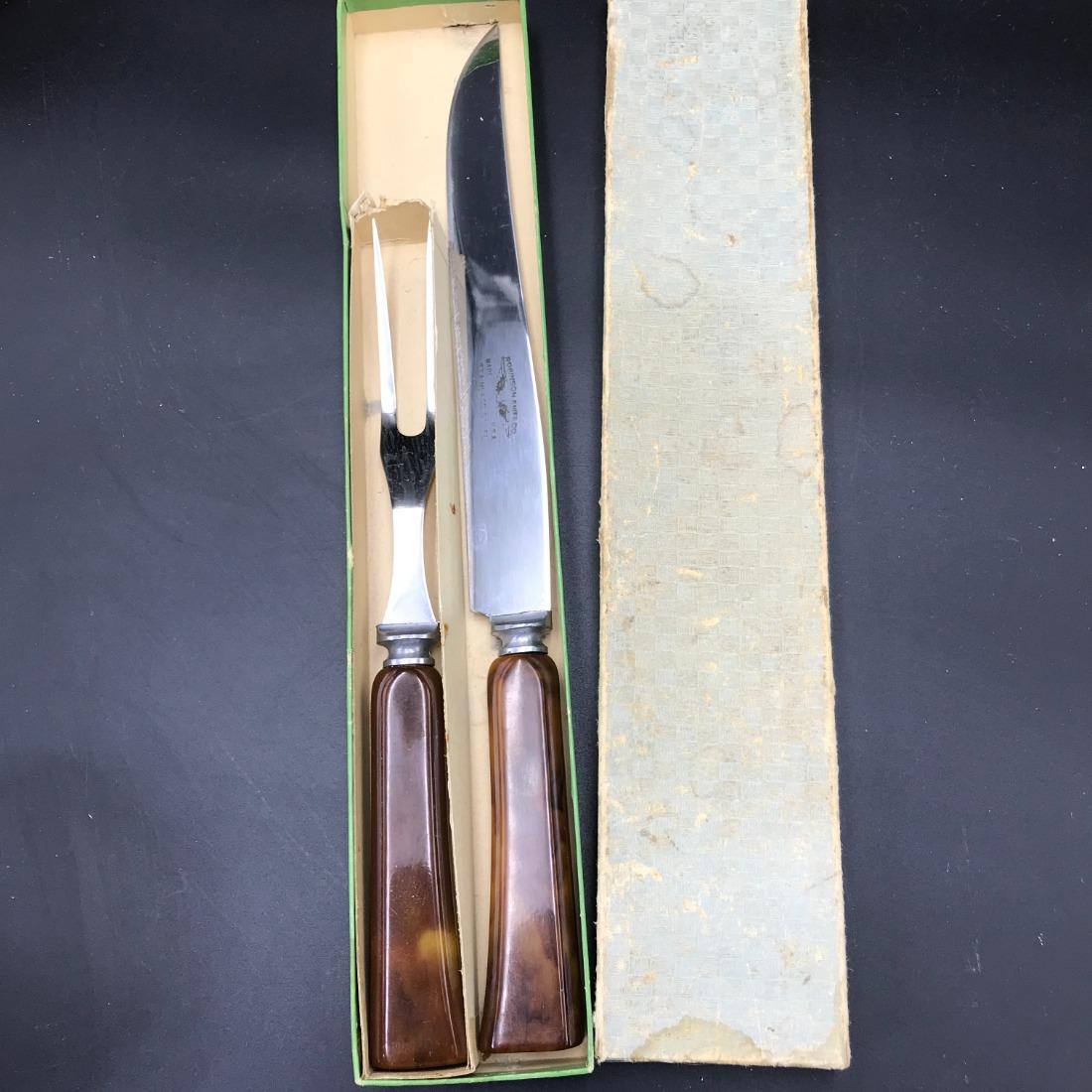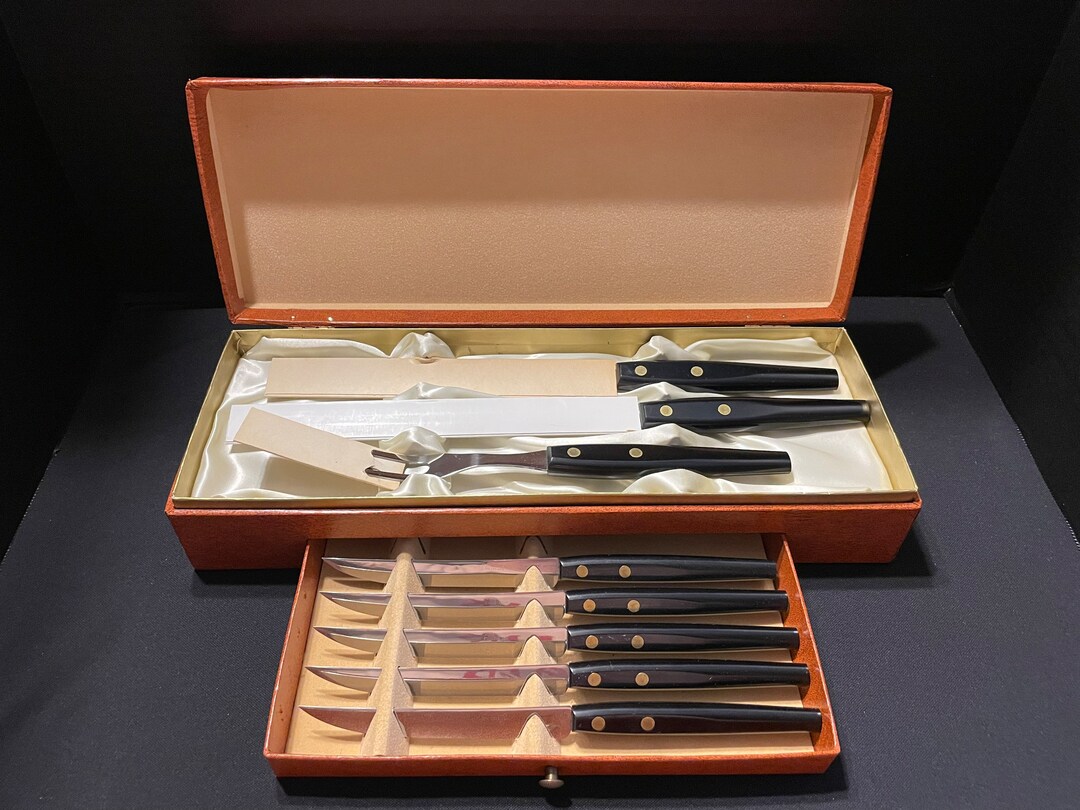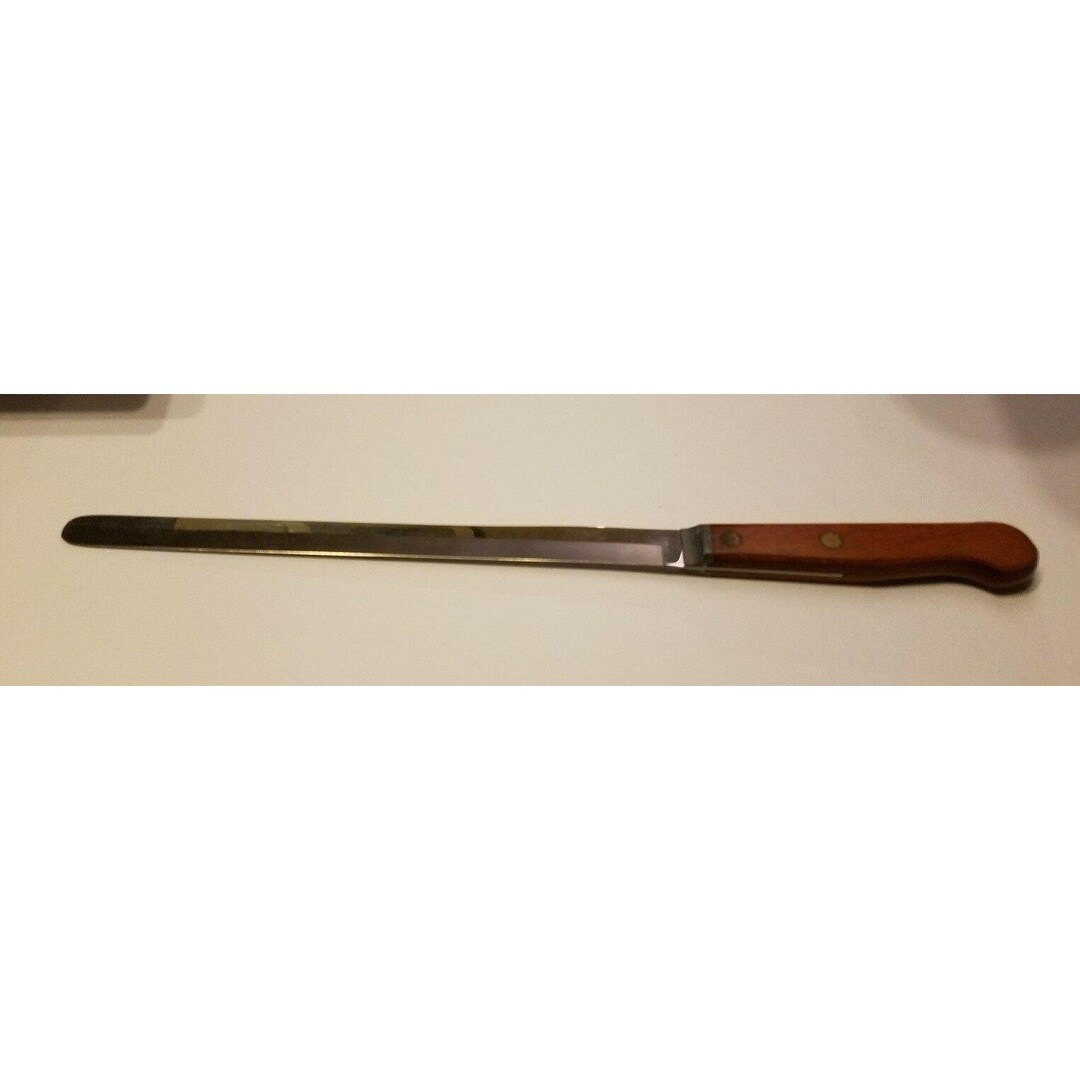The Robinson Knife: Imagining A Tool Built On Helicopter Principles
Have you ever considered what makes a tool truly exceptional? So, it's almost like thinking about the core values that make something dependable. For many, the name Robinson brings to mind incredible machines soaring through the sky. That, is that a company known for transforming the helicopter industry, really, could offer some deep insights into what makes a great piece of equipment. We're talking about a legacy built on precision and getting the job done, no matter how tough the task.
It's fascinating, too, how certain brands become synonymous with quality and trust. Frank Robinson, a visionary, left an indelible mark on the world, honestly, by focusing on what truly matters. His company, Robinson Helicopter, has been prioritizing safety, simplicity, and dependability since 1973. This approach has allowed more people to accomplish more missions, you know, making complex tasks feel manageable.
Now, just imagine if those same guiding principles were applied to an everyday item, perhaps something like a cutting tool. What would a "Robinson knife" look like? How would it feel? It's a bit of a thought experiment, but one that helps us appreciate the engineering and philosophy behind truly great design. We'll explore how Robinson's commitment to excellence could shape a tool you might hold in your hand, perhaps, every single day.
Table of Contents
- Frank Robinson: A Legacy of Innovation
- The Essence of Robinson Principles
- Engineering for Precision and Comfort
- Built to Get the Job Done
- Affordability and Maintainability
- Robinson Knife FAQs
- A Vision for the Future of Tools
Frank Robinson: A Legacy of Innovation
To truly grasp what a "Robinson knife" might embody, we really need to look at the person who started it all. Frank Robinson, a remarkable individual, passed away at his home in Rolling Hills, California, on November 12, 2022. He was 92 years old, and honestly, his impact was huge. He left behind a tremendous legacy, having fundamentally changed the helicopter industry.
He built the Robinson Helicopter Company into what is, basically, the world’s leading producer of civilian helicopters. His vision wasn't just about making machines fly. It was about making them accessible, safe, and reliable for more people. That commitment to practical excellence is something we can learn a lot from, you know, when thinking about any kind of tool.
Personal Details & Bio Data: Frank Robinson
| Full Name | Frank Robinson |
| Date of Passing | November 12, 2022 |
| Age at Passing | 92 years |
| Location of Passing | Rolling Hills, California, USA |
| Primary Achievement | Transformed the helicopter industry; Founded Robinson Helicopter Company |
| Company Legacy | World’s leading producer of civilian helicopters |
| Core Company Values | Safety, Simplicity, Dependability (since 1973) |
The Essence of Robinson Principles
The very heart of Robinson Helicopter’s success lies in a few key principles. These aren't just buzzwords, they are, in fact, the foundation of everything they do. If we were to design a "Robinson knife," these principles would be its very soul. They guide every choice, from materials to the final shape, really.
- Can You Say Happy Memorial Day
- Accident In Youngstown Ohio
- Age 15 Betty White Daughter
- Was Patrick Swayze Religious
- Randy Jones Tiny House
Safety First, Always
For Robinson, safety is, quite literally, paramount. Their helicopters are known for exceptional safety features. This isn't just about preventing accidents; it’s about giving users confidence in their equipment. A "Robinson knife," then, would prioritize safety in every aspect. It would have a secure grip, perhaps, that feels natural in your hand, reducing the chance of slips. The blade would lock firmly, too, when open, or sheath securely when closed, preventing accidental cuts.
Think about it: a tool that feels inherently safe to use, that, honestly, minimizes risk for the person holding it. This could mean a carefully designed handle that prevents your hand from sliding onto the blade. It might also involve a very intuitive locking mechanism, one that you can operate without even really thinking about it. That kind of thoughtful design, you know, makes a big difference.
Simplicity for Ease of Use
Robinson helicopters are designed for ease of operation. They don't have unnecessary complications. This simplicity means pilots can focus on their mission, not on fighting the controls. A "Robinson knife" would follow this philosophy. It would be straightforward, you know, without too many confusing parts or features you'd never use. It would just work, simply and effectively.
This means a clean design, perhaps, one that's easy to understand at a glance. No complex mechanisms that might break or jam. It would be a tool that feels like an extension of your hand, very natural to manipulate. This focus on simplicity, you see, reduces pilot fatigue in helicopters, and it would reduce user fatigue in a knife, making it comfortable for extended use. It's about making the tool disappear, so you can focus on the task, actually.
Unwavering Dependability
Since 1973, Robinson has built a reputation for dependability. Their machines are built to perform consistently, mission after mission. A "Robinson knife" would be a tool you could always count on. It would hold a sharp edge for a long time, for instance, and the materials would be robust, able to withstand regular use without failing. It would be a tool that doesn't let you down, ever.
This means using materials that are, very, very durable. The blade would be made of something that resists wear, and the handle would stand up to impacts and harsh conditions. You could rely on it in critical moments, perhaps, just like pilots rely on their helicopters in demanding situations. That kind of consistent performance, you know, builds true trust over time.
Engineering for Precision and Comfort
Robinson’s patented cyclic design, for example, enhances safety, comfort, and ease of operation. It minimizes flight control interference and ensures consistent handling. This attention to detail in engineering would be a hallmark of a "Robinson knife." It would be a tool that feels balanced in your hand, allowing for very precise cuts.
The blade, you see, would be ground with great care, ensuring a consistent edge from tip to handle. The handle itself would be shaped ergonomically, fitting comfortably in different hand sizes. This focus on the user's comfort and the tool's precision, you know, is a direct reflection of Robinson’s design philosophy. It's about making the tool feel like an extension of your own capability, actually.
Think about the way the R66, for instance, is known for its smooth handling. A "Robinson knife" would offer that same kind of smooth, predictable performance. It wouldn't wobble or feel flimsy. Every part would fit together perfectly, reducing any play or looseness. This level of engineering, you know, makes a tool a true pleasure to use, and it lasts longer, too.
Built to Get the Job Done
Robinson helicopters are found in every corner of the world, tackling critical undertakings. From keeping cities safe to combating natural disasters, they get the job done. A "Robinson knife" would be a versatile workhorse, ready for any task you throw at it. It wouldn't be a showpiece; it would be a practical tool, built for real work, perhaps, every single day.
This means a blade shape that is useful for a wide range of cutting tasks, maybe. It would be capable of handling tough materials, but also delicate enough for fine work. Just like a Robinson helicopter can carry more passengers, more cargo, and more specialized equipment, this knife would be ready for various missions. It's about practical utility, you know, and not just looking good.
Whether you're opening boxes, preparing food outdoors, or doing some light utility work, the "Robinson knife" would be up to the task. It would be the kind of tool you grab without hesitation, knowing it will perform. This reliability in diverse situations, you see, is a direct echo of the helicopter company's core mission. It's about being ready for anything, basically.
Affordability and Maintainability
One of Robinson's strengths is the affordability of maintenance and the lowest cost per hour of operation for their helicopters. This practical approach would extend to a "Robinson knife." It would be a tool that's easy to care for, perhaps, and doesn't require specialized equipment for sharpening or cleaning. It would be designed for long-term ownership, you know, without hidden costs.
This means using materials that are easy to maintain, and a design that allows for simple cleaning. Sharpening would be straightforward, too, allowing anyone to keep the edge keen without much fuss. The goal would be to make a high-quality tool that is also economical to own and use over many years. This commitment to long-term value, you know, is a defining characteristic of the Robinson approach.
The technical publications for Robinson helicopters, for instance, are provided for maintenance and operation. This suggests a philosophy of empowering the user. A "Robinson knife" would come with clear, simple instructions for its care, ensuring it remains a dependable tool for years. It's about giving you what you need to keep your tool performing its best, basically.
Robinson Knife FAQs
People often wonder about the qualities of a dependable tool. Here are some thoughts related to what a "Robinson knife" might offer:
What makes a tool truly dependable?
A truly dependable tool, you know, is one that performs consistently when you need it most. It’s built with robust materials, has a simple, effective design, and feels safe to use. Just like Robinson helicopters, a dependable tool minimizes surprises and always delivers on its promise. It’s about trust, honestly, in every cut or every mission.
How would "simplicity" apply to a knife's design?
Simplicity in a knife design would mean a clean, uncluttered look. It would have only the essential features, without any unnecessary complexity. This makes it easy to handle, to clean, and to maintain. A simple design, you see, often means fewer parts that can fail, leading to greater reliability. It's about focusing on the core function, basically.
What kind of materials would a "Robinson knife" use?
Given Robinson's focus on durability and performance, a "Robinson knife" would likely use high-quality, resilient materials. This could mean a tough, corrosion-resistant steel for the blade that holds an edge well. The handle would probably be made from a material that offers a secure grip, is comfortable, and can withstand various conditions. It’s about choosing materials that support the tool's long life and consistent performance, really.
A Vision for the Future of Tools
While the "Robinson knife" remains a conceptual idea, exploring it helps us appreciate the engineering principles that make any tool great. The legacy of Frank Robinson, built on safety, simplicity, and dependability, offers a powerful blueprint. These are the qualities that allow people to accomplish important tasks, whether it’s flying a helicopter or making a precise cut with a hand tool. It's about creating things that empower us, you know, to do more and do it better.
Robinson is committed to developing, manufacturing, and supporting reliable and efficient manned and unmanned helicopters. This forward-looking approach, honestly, suggests a constant drive for improvement and innovation. If a "Robinson knife" were ever to exist, it would surely embody this same spirit of continuous refinement, making it a tool that evolves with user needs.
To learn more about the incredible machines that inspired this discussion, you can visit www.robinsonheli.com. You can also learn more about dependable tools on our site, and link to this page for insights into quality tool design.
- Who Is Byron Scotts Ex Wife
- Dan Epps
- Who Is Lisa Presleys Baby Daddy
- Best Salt And Stone Deodorant
- Ace Of Spades Magnum Bottle

Robinson Knife Company Elk Horn Stainless Steel Carving Set Made in USA

Vintage Robinson Knife Set - Etsy

Vintage Robinson Knife Co Bread Knife With Wood Handle 13 1/2 - Etsy